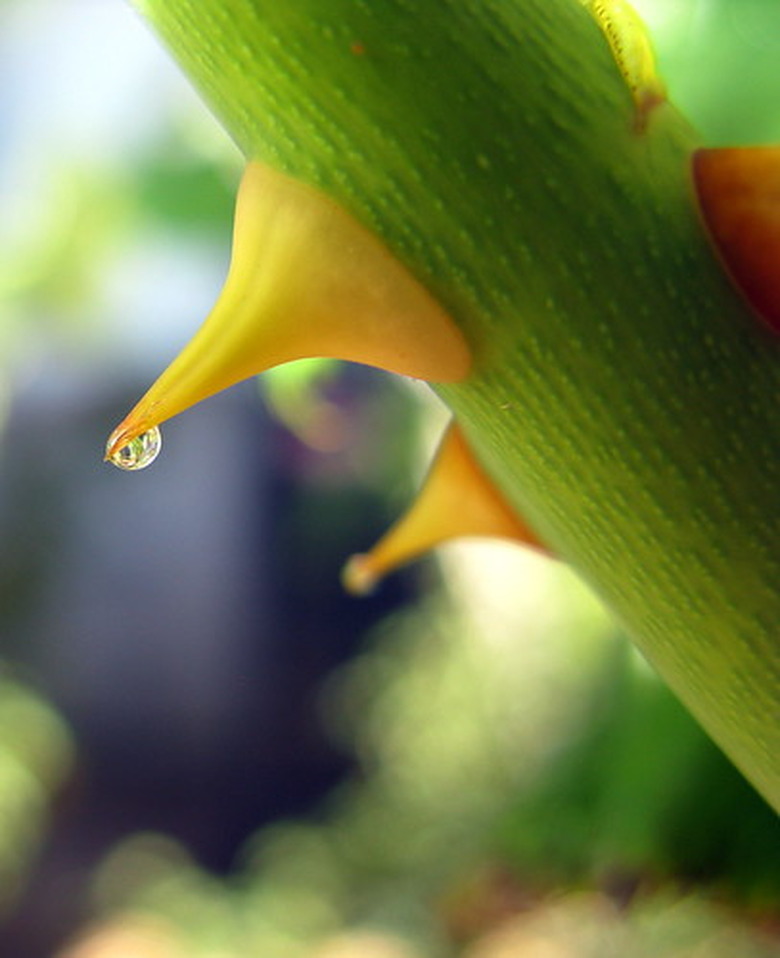The History Of The Green Rose
What excites most rose lovers about the pepper-scented green rose is the flower's lack of true petals. The small, two-inch rose bloom is comprised of turquoise-green sepals, or leaves, that form an extremely rose-like bud before opening. As the flower opens, sharp, serrated "petals" emerge, and the green rose begins to look less and less like a rose. Its blue-green, spear-like sepals unfurl and begin to take on a bronze hue as the bloom matures. A few pale green varieties of roses do exist, but none match the distinctiveness of the incomparable "China" green rose, a rose with an exotic history.
History of Origin
Most rose historians agree that the green rose first appeared sometime during the mid-18th century as early as 1743, but it wasn't until the mid-19th century that the rose began to attract attention in England and elsewhere around the world. In 1856, the U.K. firm of Bembridge & Harrison offered the unique green rose for sale.
- What excites most rose lovers about the pepper-scented green rose is the flower's lack of true petals.
- The small, two-inch rose bloom is comprised of turquoise-green sepals, or leaves, that form an extremely rose-like bud before opening.
A Rose of the South
The official name of the green rose is "rosa chinensis viridiflora," but it is also referred to as the China rose. Speculation has it that the China green rose evolved from the "Slater's Crimson China," though there seems to be no substantial proof of this. Most rosarians (rose experts) believe the green rose actually emerged in Georgia or South Carolina. In 1849, a Philadelphia nurseryman named Robert Buist was known to have the rosa viridiflora in his nursery inventory. He was reported to have first acquired cuttings of the green rose in Charleston years before in 1833.
Poorly Received in Paris
When the green rose first made its debut in 1856 at the Paris Exposition Universelle, it was received poorly by horticulturalists. One plantsman at the exposition noted harshly that the green rose was "a little monstrosity or an error of nature." London's Gardeners' Chronicle and Agricultural Gazette quipped, "a green-eyed monster like this is not inviting." Despite these critics, the hardy green rose continued to flourish, gaining a respectable share of admirers over the years.
- The official name of the green rose is "rosa chinensis viridiflora," but it is also referred to as the China rose.
- When the green rose first made its debut in 1856 at the Paris Exposition Universelle, it was received poorly by horticulturalists.
The Green Rose of Furley
The green rose was also mentioned in the semi-autobiographic writings of Helen Corse Barney, who wrote of a Quaker family's experiences with the Underground Railroad during the mid 1800s. The book, The Green Rose of Furley, pointed out how the family of nurserymen on the estate in Baltimore were known for raising a novelty plant, the green rose. Rosa viridiflora plants original to Furley Hall were in existence until the property was bulldozed in 1953. Folklore holds that Underground conductors wore a green rose as a wordless signal during their dangerous missions, but no other mention in history exists to support the legend.
Historical Meaning Behind Green Roses
Throughout history, green roses have typically represented fertility, growth and nature's abundance. A green rose conveyed wishes for success in business, as well as romantic relationships. Green roses also expressed bounty and goodwill, and the negative emotion of jealousy.
- The green rose was also mentioned in the semi-autobiographic writings of Helen Corse Barney, who wrote of a Quaker family's experiences with the Underground Railroad during the mid 1800s.
